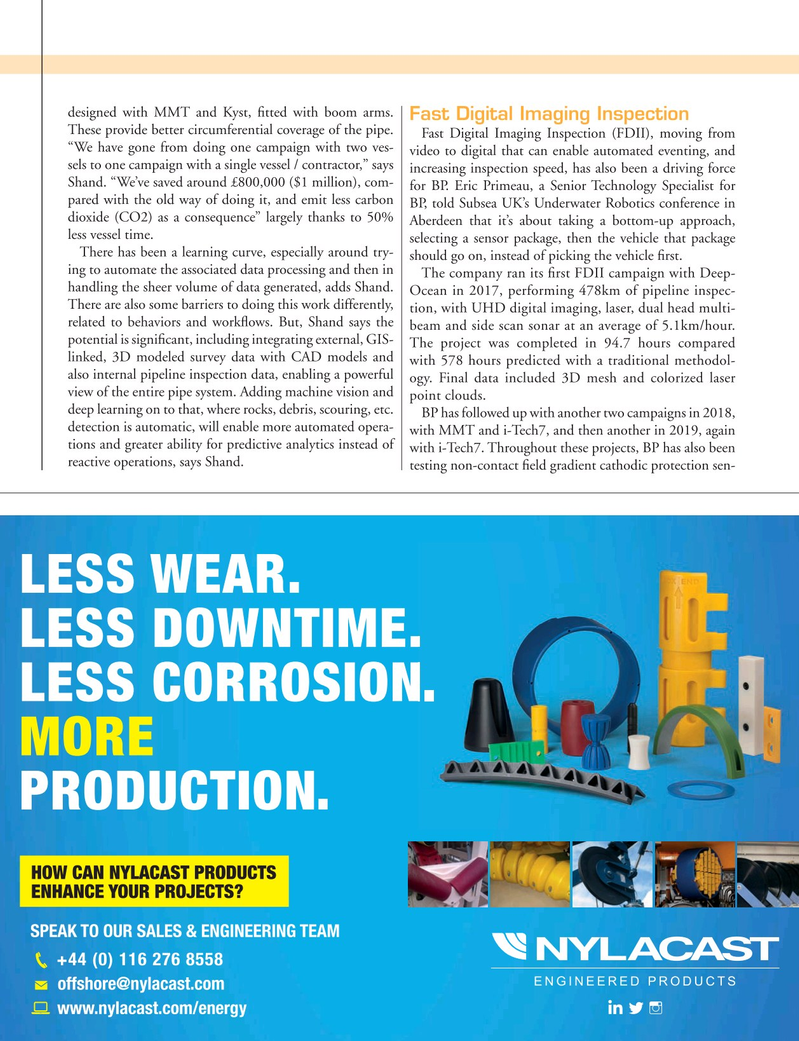
Page 29: of Offshore Engineer Magazine (Nov/Dec 2019)
Exploration Outlook
Read this page in Pdf, Flash or Html5 edition of Nov/Dec 2019 Offshore Engineer Magazine
designed with MMT and Kyst, ? tted with boom arms.
Fast Digital Imaging Inspection
These provide better circumferential coverage of the pipe.
Fast Digital Imaging Inspection (FDII), moving from “We have gone from doing one campaign with two ves- video to digital that can enable automated eventing, and sels to one campaign with a single vessel / contractor,” says increasing inspection speed, has also been a driving force
Shand. “We’ve saved around £800,000 ($1 million), com- for BP. Eric Primeau, a Senior Technology Specialist for pared with the old way of doing it, and emit less carbon BP, told Subsea UK’s Underwater Robotics conference in dioxide (CO2) as a consequence” largely thanks to 50% Aberdeen that it’s about taking a bottom-up approach, less vessel time.
selecting a sensor package, then the vehicle that package
There has been a learning curve, especially around try- should go on, instead of picking the vehicle ? rst. ing to automate the associated data processing and then in
The company ran its ? rst FDII campaign with Deep- handling the sheer volume of data generated, adds Shand. Ocean in 2017, performing 478km of pipeline inspec-
There are also some barriers to doing this work differently, tion, with UHD digital imaging, laser, dual head multi- related to behaviors and work? ows. But, Shand says the beam and side scan sonar at an average of 5.1km/hour. potential is signi? cant, including integrating external, GIS-
The project was completed in 94.7 hours compared linked, 3D modeled survey data with CAD models and with 578 hours predicted with a traditional methodol- also internal pipeline inspection data, enabling a powerful ogy. Final data included 3D mesh and colorized laser view of the entire pipe system. Adding machine vision and point clouds.
deep learning on to that, where rocks, debris, scouring, etc.
BP has followed up with another two campaigns in 2018, detection is automatic, will enable more automated opera- with MMT and i-Tech7, and then another in 2019, again tions and greater ability for predictive analytics instead of with i-Tech7. Throughout these projects, BP has also been reactive operations, says Shand.
testing non-contact ? eld gradient cathodic protection sen-

 28
28

 30
30